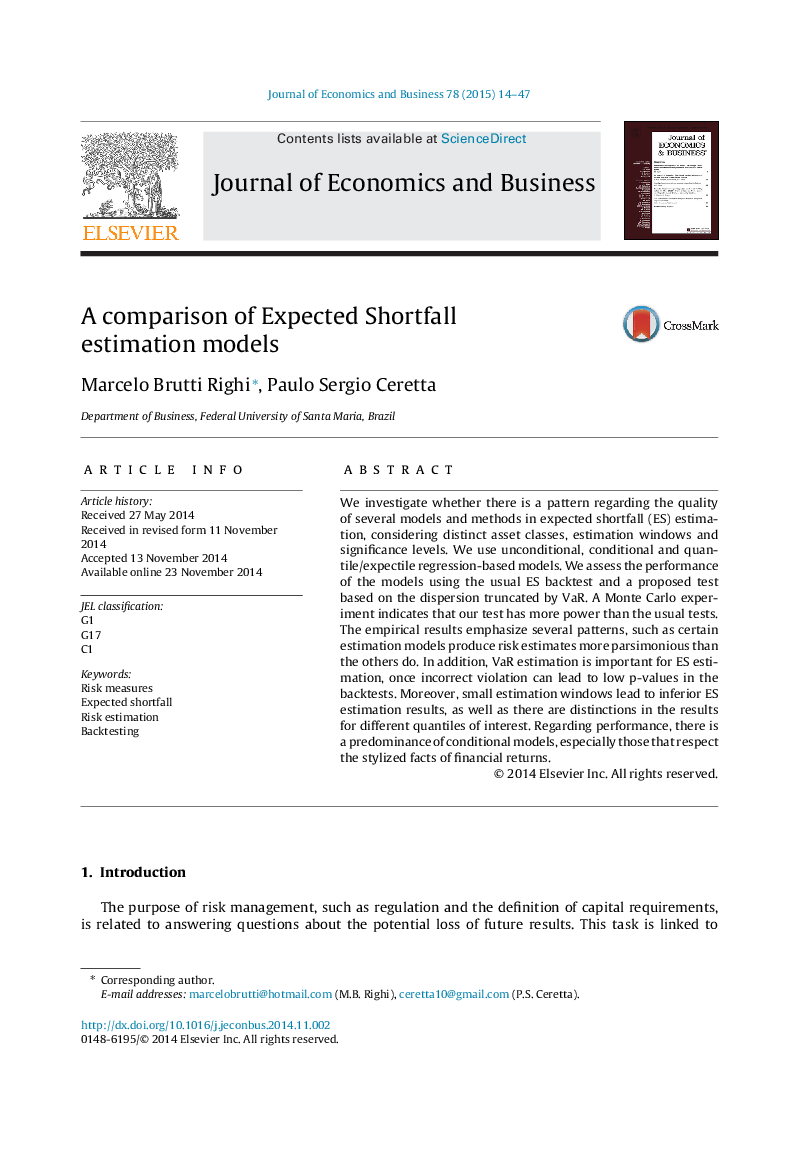| Article ID | Journal | Published Year | Pages | File Type |
|---|---|---|---|---|
| 957919 | Journal of Economics and Business | 2015 | 34 Pages |
Abstract
We investigate whether there is a pattern regarding the quality of several models and methods in expected shortfall (ES) estimation, considering distinct asset classes, estimation windows and significance levels. We use unconditional, conditional and quantile/expectile regression-based models. We assess the performance of the models using the usual ES backtest and a proposed test based on the dispersion truncated by VaR. A Monte Carlo experiment indicates that our test has more power than the usual tests. The empirical results emphasize several patterns, such as certain estimation models produce risk estimates more parsimonious than the others do. In addition, VaR estimation is important for ES estimation, once incorrect violation can lead to low p-values in the backtests. Moreover, small estimation windows lead to inferior ES estimation results, as well as there are distinctions in the results for different quantiles of interest. Regarding performance, there is a predominance of conditional models, especially those that respect the stylized facts of financial returns.
Related Topics
Social Sciences and Humanities
Business, Management and Accounting
Strategy and Management
Authors
Marcelo Brutti Righi, Paulo Sergio Ceretta,
